Backgammon and Poker: A Long Love Affair Part 1 – An Introduction

- Fact Checked by: PokerListings
- Last updated on: July 15, 2025 · 5 minutes to read
Zdenek Zizka recently became the first Backgammon Grandmaster to win a WSOP Bracelet in Event #84: $1,000 No-Limit Holdem, which got me thinking about the close ties that poker and backgammon have shared since poker was introduced to cardrooms almost 100 years ago.
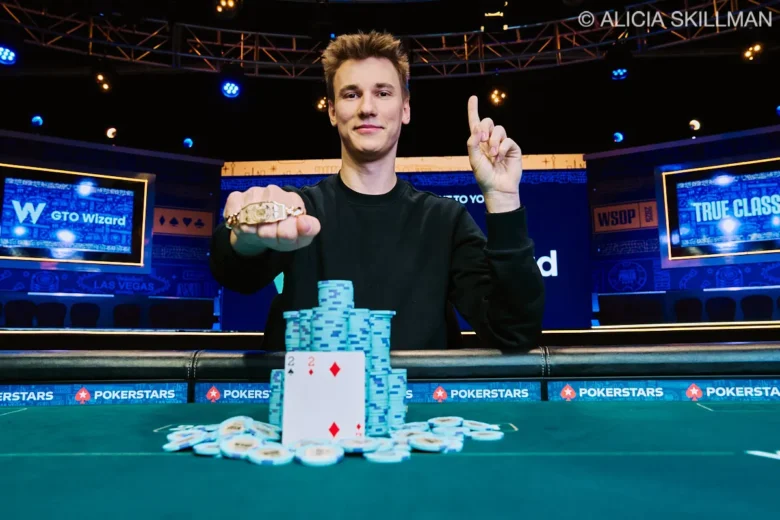
What is Backgammon?
Backgammon is a game of strategy, skill, and variance. Similar to poker, right?
The goal is to move all your checkers around the board and get them off the board before your opponent does. Each player has 15 checkers; the board has 24 narrow triangles, called points. The board is divided into 4 quadrants, with 12 points on each side. Each player has their own home board and outer board.

Players move their checkers in opposite directions, following a set path into their home board. You can land on open points or hit an opponent’s lone checker (a “blot”), sending it to the bar, from which it must re-enter before the opponent can make other moves.
Once all your checkers are in your home board, you start “bearing off” (removing them). The first to bear off all 15 checkers wins.
A Bit of History
Backgammon, as we know it today, was first mentioned in the 17th century. Before that, however, similar style “table games” had existed since 3000 BCE, usually with pieces made of bones and stones.
These games were found in tombs in Ancient Mesopotamia, modern-day Iraq, and are said to be ancestral to modern backgammon. Nard, which originated in Ancient Persia, now Iran, is also considered a spiritual precursor, and was described as having a 24-point board with 15 pieces per player, identical to modern backgammon.
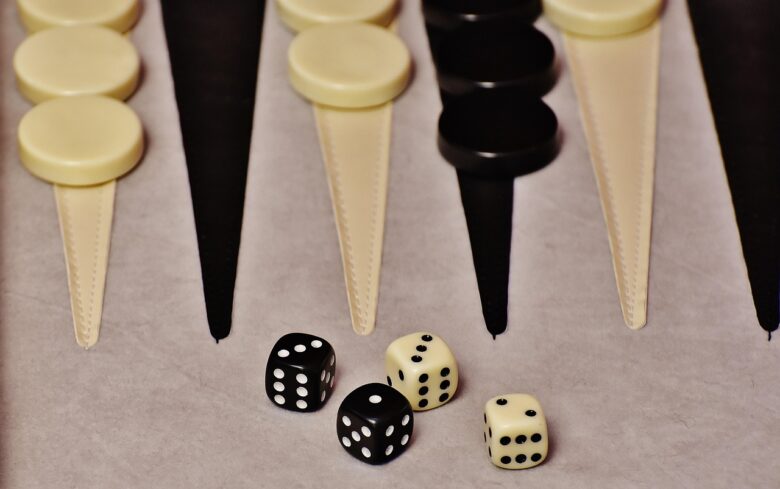
The game, or variations of it, spread across civilizations globally for generations. The game of Irish, another similar game, had an influence on the formation of backgammon, which then became more popular than the already established game of Irish.
Irish and backgammon were similar in terms of objective, the board, the number of pieces, and direction of play. The key differences were that there was no bar and the scoring was different.
In 1753, the first rulebook of backgammon was written. Edmond Hoyle, a British writer on rules for card and board games, wrote A Short Treatise on the Game of Back-Gammon.
The rules changed once more in 1850, before changing again in the 1920s. This is when the game changed, and the similarities between backgammon and poker began, with the introduction of the doubling cube.
The Doubling Cube
Before the introduction of the doubling cube, backgammon was a friendly game of chance and racing across the board.
The doubling cube is another dice with the numbers 2,4,8,16,32,64. This adds another layer to the game, as it allows players to raise the stakes during the game, forcing opponents to decide whether to accept higher risks or to concede.
If players wish to use the cube, they have to announce “double” before their dice roll. If the opponent accepts, play continues at double the allotted value; if they decline, they forfeit and lose the current stake.
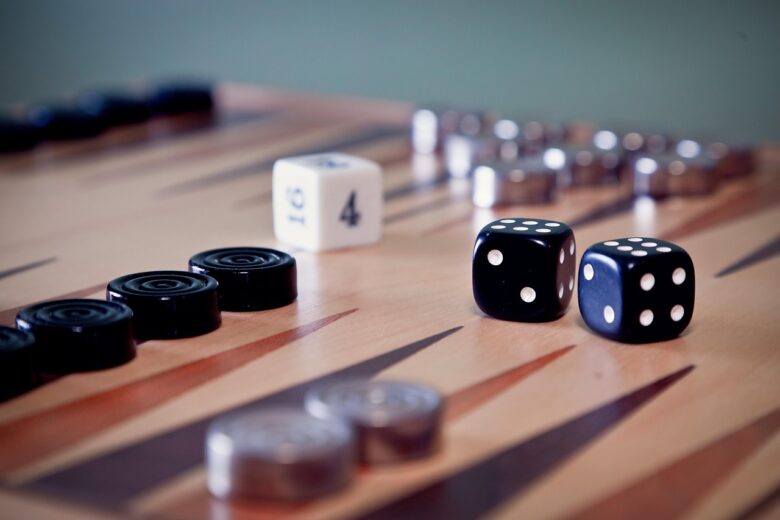
The doubling cube was introduced in New York and became a common feature in games played amongst the wealthy players and gamblers. It quickly became popular and used as a tool to drive action and increase bets when players felt they had an advantage over their opponent.
In poker, this would be the equivalent of making a raise to apply pressure to your opponent if you believed they were drawing or had a generally weak holding.
Backgammon’s Rennaisance, Poker’s First Boom
Backgammon’s continued popularity over the decades culminated in a boom in the 60’s and 70’s.
The rise of strategic play with the doubling cubes and the introduction of tournaments in Las Vegas in 1967 gave backgammon a bolstered image, and a glamorous one at that. The tournaments offered large prize pools and prestige, drawing players from around the world.
Nowadays, backgammon tournaments call Monte Carlo home, an even more fitting venue for the glamorous game of dice and decisions.

The game had a very chic, bourgeois association. Sets of backgammon boards became luxury items, having become immensely popular with members of the jet-set classes and the ultra-wealthy.
Backgammon had notable players who represented the game and helped to spread and maintain its popularity, like in poker. Prince Alexis Obolensky was one of those people. Born in Russia, he became known as the “Father of Modern Backgammon” due to his commitment to organising events and co-founding the World Backgammon Club.
Popular celebrities who enjoyed the game included Luciano Pavarotti, Omar Sharif, and Tina Turner. This star power helped increase the game’s popularity through pure association.
The Super Seventies
The 70’s were a landmark decade for both backgammon and poker. Benny Binion hosted the first WSOP in 1970, which brought significant attention to Texas Hold’em and elevated poker’s status from a side-room game to a featured event.
The decade also saw the release of two seminal texts on both games. First was Paul Magriel’s book from 1976, simply titled “Backgammon”. This text served as a guide on backgammon theory and strategy and was the first of its kind.
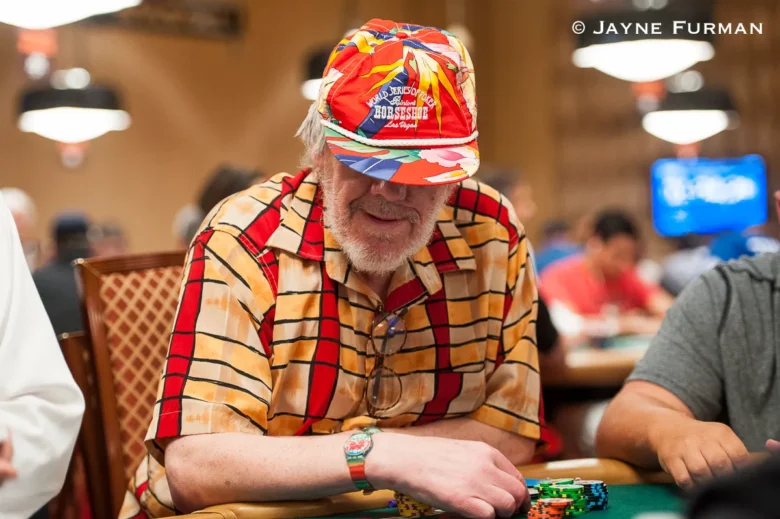
Photo Credit: Jayne Furman
This was very similar to what Doyle Brunson went on to do when he released the classic text Super/System, serving many a poker player over the years as a poker bible. Like Magriel’s text, it was the first major strategy guide written by professional players, including Chip Reese and Mike Caro.
Backgammon was also played in casinos during this period. As poker came out of the side rooms, backgammon remained confined to the smaller rooms for private games and tournaments that were usually reserved for VIPs such as celebrities and high rollers.
Poker Chips Up, Backgammon Trends Down
With the mainstream emergence and subsequent surge in popularity, poker took the front seat. As interest in poker blossomed, interest in backgammon waned in the casino.
However, this is when people like talented gamesmen Magriel, started to participate in both, due to similar dynamics between the two games.
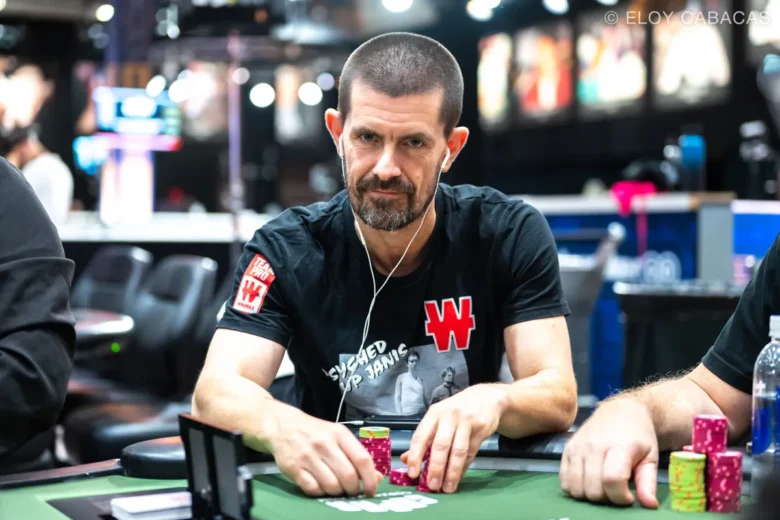
Photo Credit: Eloy Cabacas
Magriel became a skilled poker player and even made his contribution to the game. His contribution is known as the M Ratio.
The M Ratio is used to calculate the health of a players chip stack within tournament play. The lower the M, the weaker the stack. It is calculated by taking the stack size and dividing it by the small blind, big blind and total antes.
What’s Next
Tomorrow’s piece will focus more in depth about how the games are similar in terms of gameplay dynamics, and players who are skilled in both games take centre stage. Gus Hansen, is probably one of the most recognizable faces in modern poker when it comes to players who have played at the top level in both games.
Come back to pokerlistings.com tomorrow to find out more about these two beautiful games of skill and chance.
-
- 100% up to $2000
T&Cs Apply | Play Responsibly | GambleAware
18+ | Play Responsibly | T&C Apply
-
CoinPoker4.1
- 33% Weekly
- 150% up to 2000$
T&Cs Apply | Play Responsibly | GambleAware
+18 / T & C apply / Play responsible
-
Stake.US Poker4.3
- Rakeback 5%
- $55 Stake Cash + 260K Gold Coins
T&Cs Apply | Play Responsibly | GambleAware
18+ | Play Responsibly | T&C Apply
-
- 100% up to $1000
T&Cs Apply | Play Responsibly | GambleAware
T&Cs Apply | Play Responsibly | GambleAware
-
T&Cs Apply | Play Responsibly | GambleAware
18+ | T&Cs Apply | Play Responsibly | GambleAware


